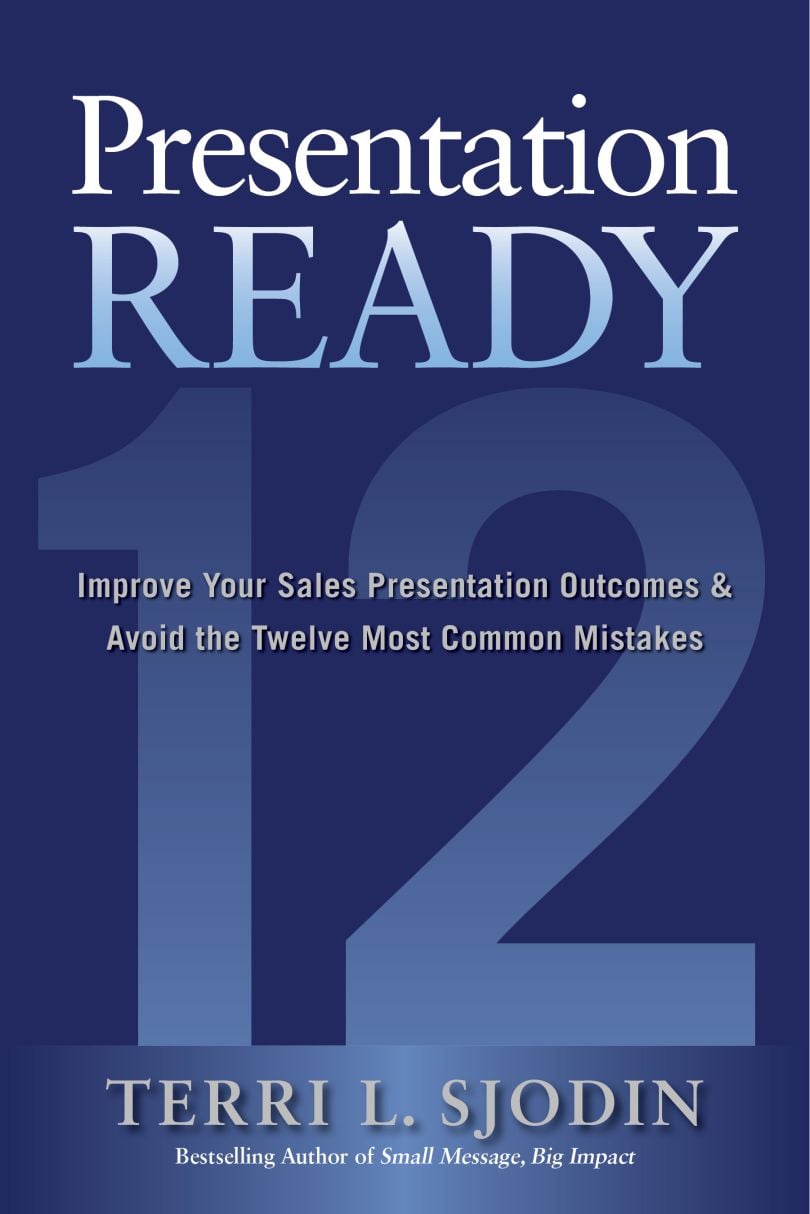Why does “winging it” happen so often? It’s an easy play for busy professionals. It happens when you’ve procrastinated or simply haven’t prepared ahead of time. Maybe it stems from overconfidence or misguided excitement. Whatever its origins, winging it rarely yields optimal results.
To some degree, the sales process will always be flexible and a little uncertain. Persuasive presentations, however, seldom materialize out of thin air. They require hard work and analysis, and must be researched, shaped, tested and retested over time. It can be tempting to just step out in front of an audience, start speaking and hope for the best. You might even get away with it if you are a talented, experienced speaker. If not, you can easily lose your audience.
What Are the 4 Speaking Formats?
- Impromptu
- Extemporaneous
- Manuscript
- Memorized
Confessions of a Presenter Who Winged It
We asked study participants to share their experiences and observations as both listeners and presenters. They revealed not only what they said and did in their own presentations, but also what they heard while attending other people’s talks, thus providing valuable dual insights about what constitutes a successful persuasive presentation.
The results showed that sales professionals who committed the mistake of winging it consistently failed to:
- Prepare
- Practice
- Get into the right frame of mind
Simply put, they did not do their homework. As a result, they appeared disorganized, unskilled and distracted.
Presenter’s Confession
I procrastinated and waited until the last minute to get ready. I did not work through the best flow and key talking points before the meeting. I should have thought through my strategy.
Listener’s Observation
The presenter seemed like they threw this thing together at the last minute. It felt unorganized and off point. They seemed unprepared and like they were out of their league.
Solution
Prepare before the presentation.
The best game plan is to do your homework early in the process while keeping the end goal in mind. Preparation is the best way to avoid winging it. That might seem obvious. The truth is that many people, for various reasons, simply fail to do it or don’t have a strategy to prepare effectively.
The 4 Types of Presentation Formats
Consider a meeting you have on your calendar right now and ask yourself a few key questions. What is my intention for this meeting? What am I trying to accomplish? Who are the listeners? What’s the audience size?
Selecting an appropriate format is the first step to avoiding the tendency to wing it. With a specific format in mind, it’s easier to prepare and proceed. If you want to give a good presentation, you must spend time preparing for it. There are four types of speaking formats.
Impromptu
Impromptu speaking is speaking without physical prompts, but using a simple mental outline to speak in the moment. Giving an impromptu talk allows you more freedom to interact with the audience. Do it well, and this style can show how knowledgeable you are about your subject in a more conversational manner.
On the other hand, an impromptu talk has distinct disadvantages when you are trying to persuade your audience. Recalling and selecting just the right words to describe what you are talking about can be a challenge. Someone giving an impromptu talk might be mistaken by the audience for someone who is winging it, but the two are quite different in that the former requires preparation.
When you are winging it, you are just rolling in hot and doing the best you can in the moment. When speaking impromptu, you have a mental outline that allows you the freedom to pivot in the moment.
Extemporaneous
Extemporaneous presenting is speaking with the aid of a written outline. This format is ideal when you are speaking to prospects. When you have the outline in front of you, it’s unlikely you will walk out the door saying to yourself, “Oh no, I forgot to cover something!” The outline also helps keep your audience on track, and you can easily provide a copy to the listeners you are addressing to keep them involved.
The drawbacks of the extemporaneous format include the possibility of forgetting words that are necessary to nail down arguments precisely. If you have ever stumbled during a presentation while trying to find the right word, you understand the problem. The presentation can also become lopsided if the speaker spends too much time on the beginning and rushes through the second half to meet time constraints.
Manuscript
This is a presentation delivered word for word from a written document. You know the precise, compelling language you have prepared, and you can keep the presentation within fixed time limits. The manuscript format is often used to deliver important messages, perhaps from a government spokesperson or at a scientific seminar.
Disadvantages include the likelihood that the discourse will sound like an essay, since people rarely write the way they speak. The talk may also sound stiff. This format makes it difficult to react spontaneously to listeners and requires a great deal of preparation so that you sound natural, not canned.
Memorized
The presentation is rehearsed and recited from memory. While this format was often used in the past, today most salespeople prefer the extemporaneous style. There is a benefit to using the memorized format as a starting point because it allows you to focus on your message and provide thoughtful illustrations. It is particularly effective in formal presentations. However, it requires extensive practice and commitment because if your mind goes blank — that’s a problem. Enough said.
An effective exercise in a training environment is to record members of your team responding to a prospect or listener’s common objections. When people realize how often certain objections occur, they can see how much more persuasive they could be if only they practice and memorize compelling responses ahead of time.
How to Choose Your Format
A good presentation requires a great deal of preparation. This is particularly true when you want to tailor your talk to each individual audience or prospect. You may have a single talk for several audiences, but it will be more effective if you take the time to customize portions of it to meet the needs of the specific group you are addressing.
 As you determine your format and put together your presentation, consider these points. Are you delivering a monologue with Q&A at the end or having more of a conversation with a prospect or client? Or a little bit of both?
As you determine your format and put together your presentation, consider these points. Are you delivering a monologue with Q&A at the end or having more of a conversation with a prospect or client? Or a little bit of both?
Have you determined which format will help you communicate the specific points in your message?
Is it appropriate to give a hard copy or send an email version of your outline as a handout to your listeners before your meeting?
No matter which format you choose, keep track of where you are headed with your arguments. Even the most seasoned professionals can stray off course. Be sure to prepare! When you wing it, you are more likely to spend too much time on irrelevant issues and omit or underemphasize essential points.
Excerpt from Presentation Ready: Improve Your Sales Presentation Outcomes & Avoid the 12 Mistakes by Terri Sjodin, pp. 3-11 (McGraw Hill, March 2024).





